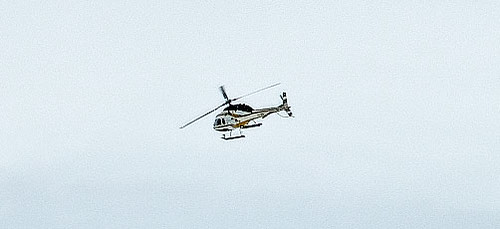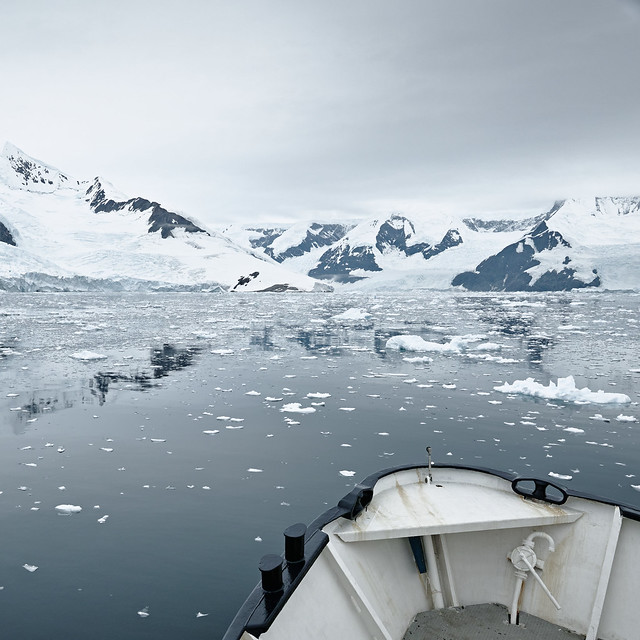Sebastian Copeland - A Global Warning
is “autohagiography” a word?
I’m not quite sure how to approach this book review. Mainly because I’m not quite sure what drove its publication. Sebastian Copeland has been publishing eco-activist photography books about polar regions for a while now: “Antarctica, The Global Warning”, foreword by Mikhail Gorbachev, “Antarctica, a Call To Action”, foreword by Orlando Bloom, “Arctica, The Vanishing North”, foreword by Sir Richard Branson, and now “Antarctica, The Waking Giant”, foreword by Leonardo di Caprio. Do you see a pattern emerging there?

Let’s be clear, we need as much clear, informed, balanced and accessible information on the impact of climate change as we can get. But when this drifts towards self-glorification, I’m not sure it helps. For example, the various inventive ways which “explorers” find to establish firsts in Antarctica is getting a bit wearisome. Fine, it’s quite an accomplishment to be the first non-gender specific person to hop single-footed without airborne support (but with all kinds of emergency beacon…) from the Pole of Inaccessibility to Mawson’s Crack, but wrapping this up as some kind of environmental action is just mistaken - at best.
Sebastian Copeland is at least partly in that community. Apparently a fairly wealthy chap, he gets up to all sorts of escapades In The Name Of The Earth, roping in his famous buddies, and every now and then persuading a publisher (never the same one) to publish his latest selection of snapshots.
He may be on message, but he doesn’t put a lot of effort into broadcasting it. I recently watched a webinar he gave on “how can polar photography help bring about change?” under the umbrella of the Antarctica Now series run by the Shackleton clothing company. His presentation was shambolic. Even accepting that maybe some technical issues were out of his control, it was blatantly clear that he done zero preparation and was just winging it. He certainly did not address the topic of the presentation. He appeared to think it was enough that he had turned up. He’s a famous photographer, you see. The contrast with the effort put in by all other presenters in the week’s other presentations was stark.
So, ok, let’s ignore all that and look at the photography. For a start, if you already happen to own “Antarctica, A Call To Action, Foreword By Orlando Bloom” (pub. 2009), then you may want to skip “Leonardo Di Caprio, The Waking Giant, Foreword By Antarctica” (pub. 2020), as it includes pretty much all the photos of the first book (itself a retread of “Antarctica, The Global Warning”, foreword by Mikhail Gorbachev.”). Since Copeland is one of the few photographers to have ventured well into the East Antarctic plateau, it would have been interesting to see what a photographer could make of that unique landscape. Unfortunately we get very few photos of this area. Admittedly it is not obviously photogenic, but is certainly open to interpretation and imagination, and presents a challenge one might expect a truly talented photographer to rise to. Instead what we get are largely tourist-level snaps of the Antarctic Peninsula (and, to emphasise, a large number of these previously published), clumsily over processed to make things seem darker and gloomier than they really are, to fit in with a political message (and I’m saying this as somebody who is 200% onboard with the political message). I don’t want to sound arrogant, but frankly I’ve got better photos of Antarctica than most of these in my rejects pile.
This is then all interspersed with various diatribes on eco-disaster and confused popular science. Sebastian Copeland presents himself as a “climate analyst” but his Wikipedia entry states “Copeland began his career in New York City directing music videos before moving on to commercial directing as well as professional photography with credits including fashion and advertising, album covers, and celebrities”. Whatever, his explanation in “Antarctica, The Waking Giant” of why ice is blue is the most convoluted I’ve ever seen. Here’s a snippet: “unlike air, which contains all three colours, water holds only green and blue hues”.
Of course, I’m just an opinionated bad tempered old git with a vastly exaggerated idea of my own knowledge and skills, but you might want to consider what Michael Reichmann had to say about “Antarctica, The Global Warning”, foreword by Mikhail Gorbachev. And by the way, Gorby was pretty good at destroying the Soviet Union and abandoning its people with no backup plan, but I’m not sure of his credentials either as a photographer or a climate specialist. Finally, the list of testimonials on Copeland’s own website rather speaks for itself.

The SOS image to my mind is particularly contrived as well as rather pointless. It puts me in mind of Spinal Tap’s stonehenge stage prop. The people involved in creating this montage were clearly somewhat at risk, needlessly so, and the fact that the whole contrivance is dwarfed by even this limited view of the landscape kind of negates the message. Reading Copeland’s account of how it was created, it’s difficult to understand given the complete failures of planning and logistics why he even discusses it. Of course, the same photo is repeated in all his books.
Don’t buy this book. It is not about Antarctica. It is not about climate change, It is about Sebastian Copeland’s need for acclaim. Probably he doesn’t get enough likes on Instagram.
To answer the question “how can polar photography help bring about change?”, I would rather refer you to the brilliant, softly spoken but hard hitting work of Olaf Otto Becker. His beautiful photography - for example, “Above Zero”, from the Greenland Ice Sheet, is largely allowed to speak for itself. There was also real risk and danger involved in getting these photos, but Becker isn’t into self-glorification. Another commendable alternative would be Melting Away by Camille Seaman, to which the same criticism of over-darkened imagery could be applied, but at least is free of the whiff of hypocrisy and the self-glorification.
Persuading the world of the perils of climate change is a necessary and commendable activity. Grandstanding, attention grabbing and name dropping in order to build up a personal mythology, less so. That the photography all this is constructed around is at best unexceptional is neither here nor there in the wider scheme of things, but it certainly doesn’t help.













